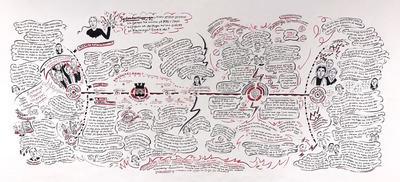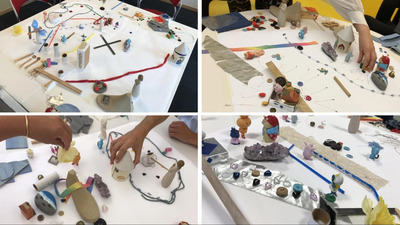Case Study: Designing for the In-between – Facilitating resilient systems to foster community well-being
Tysk, Johanna (2021) Case Study: Designing for the In-between – Facilitating resilient systems to foster community well-being. In: Proceedings of Relating Systems Thinking and Design (RSD10) 2021 Symposium, 2-6 Nov 2021, Delft, The Netherlands.
![Tysk_CaseStudy_2021.png [thumbnail of Tysk_CaseStudy_2021.png]](https://openresearch.ocadu.ca/3828/1.hassmallThumbnailVersion/Tysk_CaseStudy_2021.png)  Preview |
Image
Tysk_CaseStudy_2021.png Available under License Creative Commons Attribution Non-commercial No Derivatives. Download (2MB) | Preview |
![Tysk_Case_2021.png [thumbnail of Tysk_Case_2021.png]](https://openresearch.ocadu.ca/3828/2.hassmallThumbnailVersion/Tysk_Case_2021.png)  Preview |
Image
Tysk_Case_2021.png Available under License Creative Commons Attribution Non-commercial No Derivatives. Download (2MB) | Preview |
Abstract
Department of Computer and Information Science, Division of Human-Centered Systems, Linköping University
This practice case study represents a design-led exploration of new methods and tools to advance systems understanding and learning in the context of resident-driven innovation and cross-sectoral collaboration.
The work is happening within the umbrella of the Resident Lab, initiated by the R&D office in Helsingborg City in Sweden. It brings together researchers, residents and city offices to explore new ways of creating value for their residents. It operates on two sites in Helsingborg, both dealing with systemic challenges such as high levels of unemployment, crime, lacking health and social marginalization.
My role is that of Research Engineer and Systemic Designer, and I explore how shining light on the relations involved in the above-mentioned challenges might help us see, navigate and leverage fields of tension across scales of community-local organizations-city.
From a systemic perspective, the issues facing the Resident Lab sites are symptoms of much deeper systems flaws, spanning a vast system of practices, norms and structures. The relational lens is one that helps us make sense of what is oftentimes referred to in systems thinking as what is underneath the surface of the iceberg.
Nora Bateson, the founder of Warm Data Lab, writes
“Today’s issues did not begin last week, or in 2016, they were possibilities fermenting through time. (…) The itch to pull apart complex systems and list all their components is an impulse informed by old mechanistic thinking leading to more of the same kinds of problems. You cannot merely fix the parts and reassemble. (…) The tending must be to the relationship-ing between the parts.” – Bateson, N. (2021) What is Submerging?
As part of my role, I develop and test specific methods, and also assist in the overall innovation strategy of the lab.
Systemic approach and methods
To get a shared idea of the relationships and tensions involved from the perspective of the city I engaged the working group – public sector employees in different city offices and positions – to model the actors and relations they see as relevant tied to the city’s capacity to co-create with their residents.
In my exploration of methodology, I have been inspired by systemic constellation work, social presencing theatre and other methodologies working with embodied notions of systems.
In the workshops conducted, I brought objects with strong symbolic value, such as little toy figures, buttons, textiles, cardboard and stones, and asked the participants to build a constellation of the systems as they experience them, starting by selecting an object to represent themselves. I then asked them to use the qualities of direction, position and distance as well as additional textured objects to model relationships. The participants were asked to model the current situation, movements within the systems, and what shifts they see necessary to enable a different dynamic.
Results and continuation of Designing for the In-between
I synthesized the findings into a large systems map where key relational tensions were mapped to create a “bigger picture” of the perspectives within the group. The goal to engage the working group in a relational or systems-informed discussion of the issues at hand, and integrate this in the innovation strategy ahead.
Tensions surfaced in the map were across the spectrum of different citizen divides, divides between the areas of marginalization and more affluent areas, between operational and strategic roles within the city, between different sectors, between operational staff and residents, and between the political leadership and marginalized communities.
The discussions that followed revolved much around a systemic approach in contrast to the default approach within the public sector, where problems are most often pin-pointed in a specific part of the system – usually in the areas where the symptoms arose, or within the specific groups who are most directly affected by the challenges. The problem is then approached through separate organizational or disciplinary lenses, with the people targeted usually seen as passive receivers of a service or activity. A system organized to fix pain points rather than the ongoing iterative work of building resilient systems in response to citizen needs and challenges.
As one public employee put it: “The problem is that we don’t see ourselves as different parts of a larger whole. In this system only the local enthusiasts move in spaces in-between, a situation which easily leads to burnout”. Key questions driving the work forward: How do we strengthen relationships, increase our capacity to see together and create together across sectors and other divides? How do we enable everyone to see their part and agency in a larger whole, from citizens to local actors to politicians? How do we address citizen and other divides in systemic ways, step out of ingrained roles and power structures?
In the next phase of the project, a local network of actors and residents has been mobilized on one of the sites. During the fall of 2021, my focus will be on setting up a lab where specific topics lifted by the community members will be addressed through relational object and body constellations. Methodologies supporting both inter-resident learnings as well as learning across resident-organizations-city-political leadership levels will be explored.
The goal is to further develop the design-driven and embodied dialogue tools, deepen participants’ perspectives on the themes explored, increase individual and group agency, as well as identify important issues to lift and prototype around within the local network and on a city level.
Designing for the In-between: Possible questions to explore
What role does embodiment, activating agency and facilitating learning communities play in current systemic design practices, and how can my case study help advance these aspects of design-driven systems learning and practice?
What implications does my case study have for the traditional design-focus of the target group in the centre, instead of attempting to put the system in the centre?
| Item Type: | Conference/Workshop Item (Other) |
|---|---|
| Divisions: | Faculty of Design |
| Date Deposited: | 26 May 2022 20:40 |
| Last Modified: | 26 May 2022 20:40 |
| URI: | https://openresearch.ocadu.ca/id/eprint/3828 |
Actions (login required)
 |
Edit View |

 Tools
Tools Tools
Tools